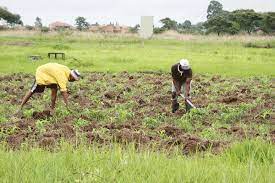Wetland weeds are also invasive alien species
INVASIVE alien species is an exotic plant, which has become naturalised and threatens the
existence of indigenous species by penetrating and replacing indigenous vegetation.
An invasive species otherwise known as an alien is an introduced organism that becomes
overpopulated and harms its new environment. Although most introduced species are neutral
or beneficial, with respect to other species, invasive species adversely affect habitats and
bioregions, causing ecological, environmental, and/or economic damage.
While the study of invasive species can be done within many subfields of biology, the
majority of research on invasive organisms has been within the field of ecology and
geography, where the issue of biological invasions is especially important.
Much of the study of invasive species has been influenced by Charles Elton’s 1958 book The
Ecology of Invasion by Animals and Plants which drew upon the limited amount of research
done within disparate fields to create a generalised picture of biological invasions. Studies on
invasive species remained sparse until the 1990s when research in the field experienced a
large amount of growth which continues to this day.
This research, which has largely consisted of field observational studies, has
disproportionately been concerned with terrestrial plants. The rapid growth of the field has
driven a need to standardize the language used to describe invasive species and events.
Despite this, little standard terminology exists within the study of invasive species, which
itself lacks any official designation but is commonly referred to as invasion ecology" or
more generally invasion biology.
In the Matabeleland South region, the major invasive species are opuntia fulgida and lantana
camara, where it has invaded the seven districts of Matabeleland South Province. The opuntia
fulgida is mainly dominant in Beitbridge District and also presents in Gwanda South, Insiza,
Bulilima, Mangwe and Matobo districts, spreading across the province.
Another species that is also a threat in our province especially in Matobo and Umzingwane
Districts is lantana camara (ubuhobe), which has threatened the fodder for our livestock.
During the stakeholder engagement meeting, these invasive species were indicated as one of
the major the environmental problems in the district as it has threatened an area of about
500hectares in these districts.
According to previous reports, it has been stated that the Agency, with other Government
departments and NGOS, has worked with these communities from Matobo and Umzingwane
district especially farmers through awareness campaigns discussing the controls of invasive
species and projects such as nutrition gardens that has been formed.
INVASIVE ALLIEN SPECIES CONTROL
Prevent stream bank cultivation which results in fertilizers being washed into water bodies
resulting in hyacinth bloom due to nutrient loading.
¨ In terms of communal areas, farmers through assistance from their local leaders can apply
for grants from EMA and LAs to support eradication programmes
¨ It is also the duty of responsible persons to report to their LAs, Forestry Commission or
EMA the existence of IAS in their areas
¨ Responsible persons are advised to contact their LAs, forestry officers, Agritex, EMA
officers and ZimParks officers on the best method for invasive alien species removal.
¨ Do not move any aquatic plants or animals (including fish) from one water body to another-
without written authorisation from the relevant authorities.
.. Cut and bury the weeds in –situ. For example, opuntia fulgida is cut and buried in situ to
prevent its spread.



